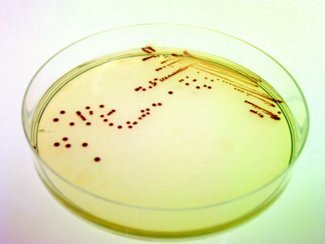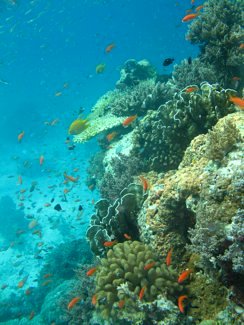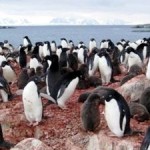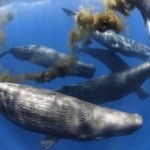
Bremerhaven – The simpler a marine organism is structured, the better it is suited for survival during climate change. Scientists of the Alfred Wegener Institute (AWI), Helmholtz Centre for Polar and Marine Research, discovered this in a new meta-study, which appeared on June 26 in the research journal Global Change Biology.
For the first time biologists studied the relationship between the complexity of life forms and the ultimate limits of their adaptation to a warmer climate. While unicellular bacteria and archaea are able to live even in hot, oxygen-deficient water, marine creatures with a more complex structure, such as animals and plants, reach their growth limits at a water temperature of 41 degrees Celsius. This temperature threshold seems to be insurmountable for their highly developed metabolic systems.
The current IPCC Assessment Report shows that marine life forms respond very differently to the increasing water temperature and the decreasing oxygen content of the ocean. “We now asked ourselves why this is so. Why do bacteria, for example, still grow at temperatures of up to 90 degrees Celsius, while animals and plants reach their limits at the latest at a temperature of 41 degrees Celsius,” says Dr. Daniela Storch, biologist in the Ecophysiology Department at the Alfred Wegener Institute (AWI) and first author of the current study.
Since years Storch and her colleagues have been investigating the processes that result in animals having a certain temperature threshold up to which they can develop and reproduce. The scientists found that the reason for this is their cardiovascular system. They were able to show in laboratory experiments that this transport system is the first to fail in warmer water. Blood circulation supplies all cells and organs of a living organism with oxygen, but can only do so up to a certain maximum temperature. Beyond this threshold, the transport capacity of this system is no longer sufficient; the animal can then only sustain performance for a short time. Based on this, the biologists had suspected at an early date that there is a relationship between the complex structure of an organism and its limited ability to continue to function in increasingly warm water.
“In our study, therefore, we examined the hypothesis that the complexity could be the key that determines the ultimate adaptability of diverse life forms, from marine archaea to animals, to different living conditions in the course of evolutionary history. That means: the simpler the structure of an organism, the more resistant it should be,” explains the biologist.
If this assumption is true, life forms consisting of a single simply structured cell would be much more resistant to high temperatures than life forms whose cell is very complex, such as algae, or whose bodies consist of millions of cells. Hence, the tolerance and adaptability thresholds of an organism type would always be found at its highest level of complexity. Among the smallest organisms, unicellular algae are the least resistant because they have highly complex cell organelles such as chloroplasts for photosynthesis. Unicellular protozoans also have cell organelles, but they are simpler in their structure. Bacteria and archaea entirely lack these organelles.

To test this assumption, the scientists evaluated over 1000 studies on the adaptability of marine life forms. Starting with simple archaea lacking a nucleus, bacteria and unicellular algae right through to animals and plants, they found the species in each case with the highest temperature tolerance within their group and determined their complexity. In the end, it became apparent that the assumed functional principle seems to apply: the simpler the structure, the more heat-tolerant the organism type.
But: “The adaptation limit of an organism is not only dependent on its upper temperature threshold, but also on its ability to cope with small amounts of oxygen. While many of the bacteria and archaea can survive at low oxygen concentrations or even without oxygen, most animals and plants require a higher minimum concentration,” explains Dr. Daniela Storch.
The majority of the studies examined show that if the oxygen concentration in the water drops below a certain value, the oxygen supply for cells and tissues collapses after a short time.
The new research results also provide evidence that the body size of an organism plays a decisive role concerning adaptation limits. Smaller animal species or smaller individuals of an animal species can survive at lower oxygen concentration levels and higher temperatures than the larger animals.














